12/15/12
Tanis overview
Tanis was a city,
located in northern or lower part of Egypt at the north east of the
delta, capital of Egypt during the twenty-first and twenty-second
dynasties but do to inundations threatening had to be abandoned.
Much
of the stones that came to this place were from Per Ramesses or
Pi-Ramesses capital of the delta founded as capital of Lower Egypt by
Ramses the II the great constructor; this is also the city from where
ruled some of the descendants of Ramses III dynasty.
Tanis came to
power at the time that Thebes was ruled by the its High priests, the
last pharaoh of the twentieth Ramses XI, was too week to control them.
The Nubian
garrisons that were call for help took advantage of the situation and a
civil war broke that brought the besiege of Medinet Habu, they broke
to pieced the main entrance, it was a time of great disorder in Egypt
it was not only the end of the twentieth but also the end of the
glorious Egyptian dynasties.
At this time Egypt
enters to the third intermediate period and Egypt was divided into
small kingdoms Smendes raised from a powerful non-royal family
nevertheless his wife Tentamun, probably had royal nexus. Anyway, he
proclaimed its independence in the delta and founded the twenty-first
dynasty.
The jewelry and
sarcophagus found in the area belonging to the Tanis dynasties show
that they had a solid economic status that rivals any other place in
Egypt at that time.
The principal triad
consecrated to the temples of this city was Amon-Ra, Mut and their son
Khonsu, the same triad as Thebes and probably Smendes have been a
powerful governor and was related to the wife of the High priest of
Thebes and even so that some sources mentions him as the Egyptian
Pharaoh they did not made a good stronghold to reunify Egypt again.
It is not certain if he ruled the entire Egypt but is very clearly a sure that he ruled the delta and was very powerful economically
On the other hand during this period half of Egypt was divided and the south or Upper Egypt was under a strong hereditary theocracy.
Eventually the
whole Egypt went into a great disorder and was disjointed in small
local kingdoms of not much importance, torn into rivalry among them and
the usurpation of tombs was a common thing, the gods have fallen to
the ground.
Tanis In popular culture
In the 1981 film Raiders of the Lost Ark, Tanis was said to be the resting place of the Ark of the Covenant which was hidden in a secret chamber called the Well of Souls. Tanis was inaccurately depicted as having been destroyed in a sand storm and buried until 1936 when it was discovered by a German expedition outside Cairo. In fact, Tanis was the site of numerous archaeological digs beginning in the 19th century, involving Flinders Petrie and Auguste Mariette.
In the film Pandorum,
Earth - in the year 2174 - has grown overpopulated and humanity has
fought over the last natural resources. In a desperate attempt to
preserve the human race, 60,000 people are sent in a massive ship called
Elysium to colonize the only known Earth-like planet named Tanis.
In the novel The World's Desire by H. Rider Haggard, Tanis is the principal location of the action.
The ruins at Tanis
here are ruins of a number of temples, including the chief temple dedicated to Amun, and a very important royal necropolis of the Third Intermediate Period (which contains the only known intact royal Pharaonic burials — the tomb of Tutankhamun
having been entered in antiquity). Many of the stones used to build the
various temples at Tanis came from the old Ramesside town of Qantir (ancient Pi-Ramesses/Per-Ramesses), which caused many former generations of Egyptologists to believe that Tanis was, in fact, Per-Ramesses. However the burials of three Dynasty 21 and Dynasty 22 pharaohs — Psusennes I, Amenemope and Shoshenq II, survived the depredations of tomb robbers throughout antiquity. They were discovered intact in 1939 and 1940 by Pierre Montet
and proved to contain a large catalogue of gold, jewelry, lapis lazuli
and other precious stones including the funerary masks of these kings.
The chief deities of Tanis were Amun, his consort, Mut, and their child Khonsu, forming the Tanite triad. This triad was, however, identical to that of Thebes, leading many scholars to speak of Tanis as the "northern Thebes".
In 2009, the Egyptian Culture Ministry reported archaeologists had
discovered the site of a sacred lake in a temple to the goddess Mut at
the San al-Hagar archaeological site in ancient Tanis. The lake, built
out of limestone blocks, had been 15 meters long and 12 meters wide. It
was discovered 12 meters below ground in good condition. This was the
second sacred lake found at Tanis. The first lake at the site had been
identified in 1928.
The history of tanis :
Tanis was a brand new city in ancient Egypt and served as a parallel
religious center to Thebes in the Third Intermediate Period. No
archaeological evidence from it pre-dates the reign of Psusennes I
(1039-991 BC), but many scholars think it originated in the late New
Kingdom. Tanis's creation was most likely due to the silting up of the
Nile branch that ran by Pi-Ramesses, which forced people to seek another area with access to water. Later on, Tanis would become known as Thebes of Lower Egypt.
The kings at Tanis saw themselves as the legitimate successors on the
throne of Upper and Lower Egypt. They used traditional titles and
displayed their royalty in building work, although that was
insignificant when compared to activity at the height of the New
Kingdom.
Tanis was founded in the late Twentieth Dynasty, and became the northern capital of Egypt during the following Twenty-first Dynasty. It was the home city of Smendes, founder of the 21st dynasty. During the Twenty-second Dynasty Tanis remained as Egypt's political capital (though there were sometimes rival dynasties located elsewhere in Upper Egypt). It was an important commercial and strategic city until it was threatened with inundation by Lake Manzala in the 6th century AD, when it was finally abandoned. The refugees founded the nearby city of Tennis.
The Hebrew story adopted by Christianity of Moses’ being found in the
marshes of the Nile River as told in Exodus 2:3-5 is commonly located
at Tanis. However, the intent of those stories may be as spiritual as
much as historical allegories, as no supporting archaeological evidence
has been unearthed. The demise of the city may well have been siltation
of Nile tributaries.
Subscribe to:
Posts (Atom)

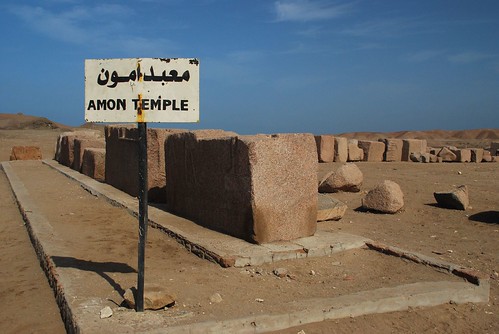

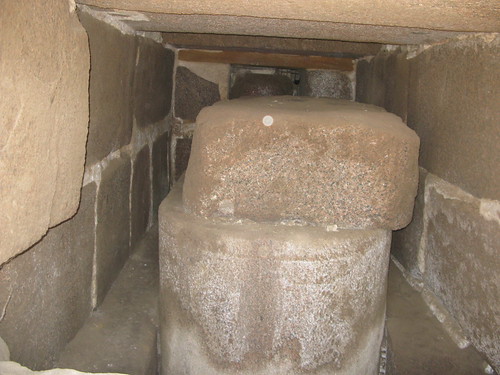


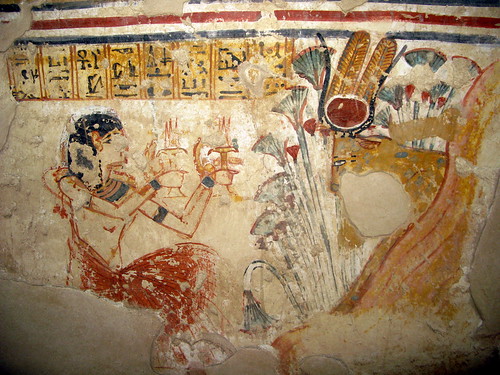
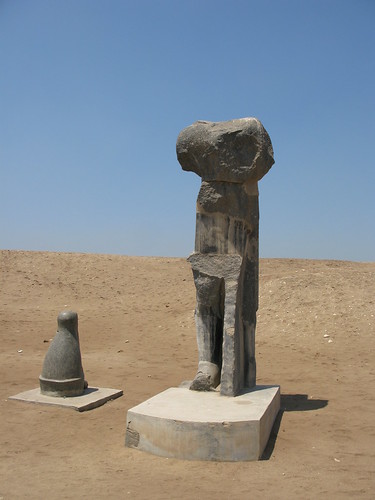
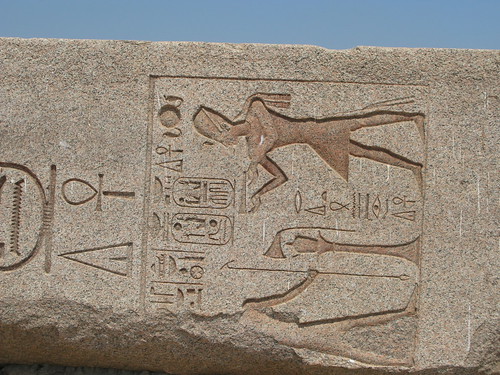





_-_TIMEA.jpg)
